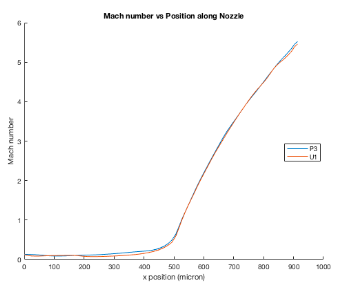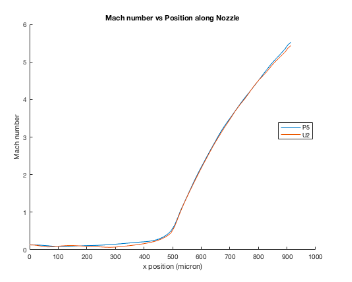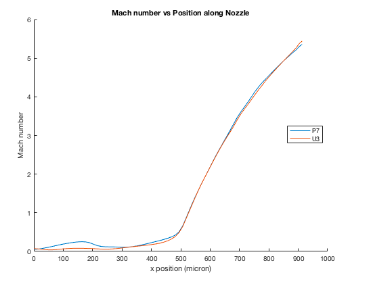 P3 and U1. Initial inlet velocity of 106 m/s.
P3 and U1. Initial inlet velocity of 106 m/s.
|
 P5 and U2. Initial inlet velocity of 103 m/s.
P5 and U2. Initial inlet velocity of 103 m/s.
|
 P7 and U3. Initial inlet velocity of 56 m/s.
P7 and U3. Initial inlet velocity of 56 m/s.
|
Mach number profiles for the different initial pressure ratio cases seem to match fairly well to their corresponding initial velocity cases.
The nozzle is accelerating flow in the same way for all of these cases. However inspection of the unscaled velocity profiles shows some
divergence between the solutions.